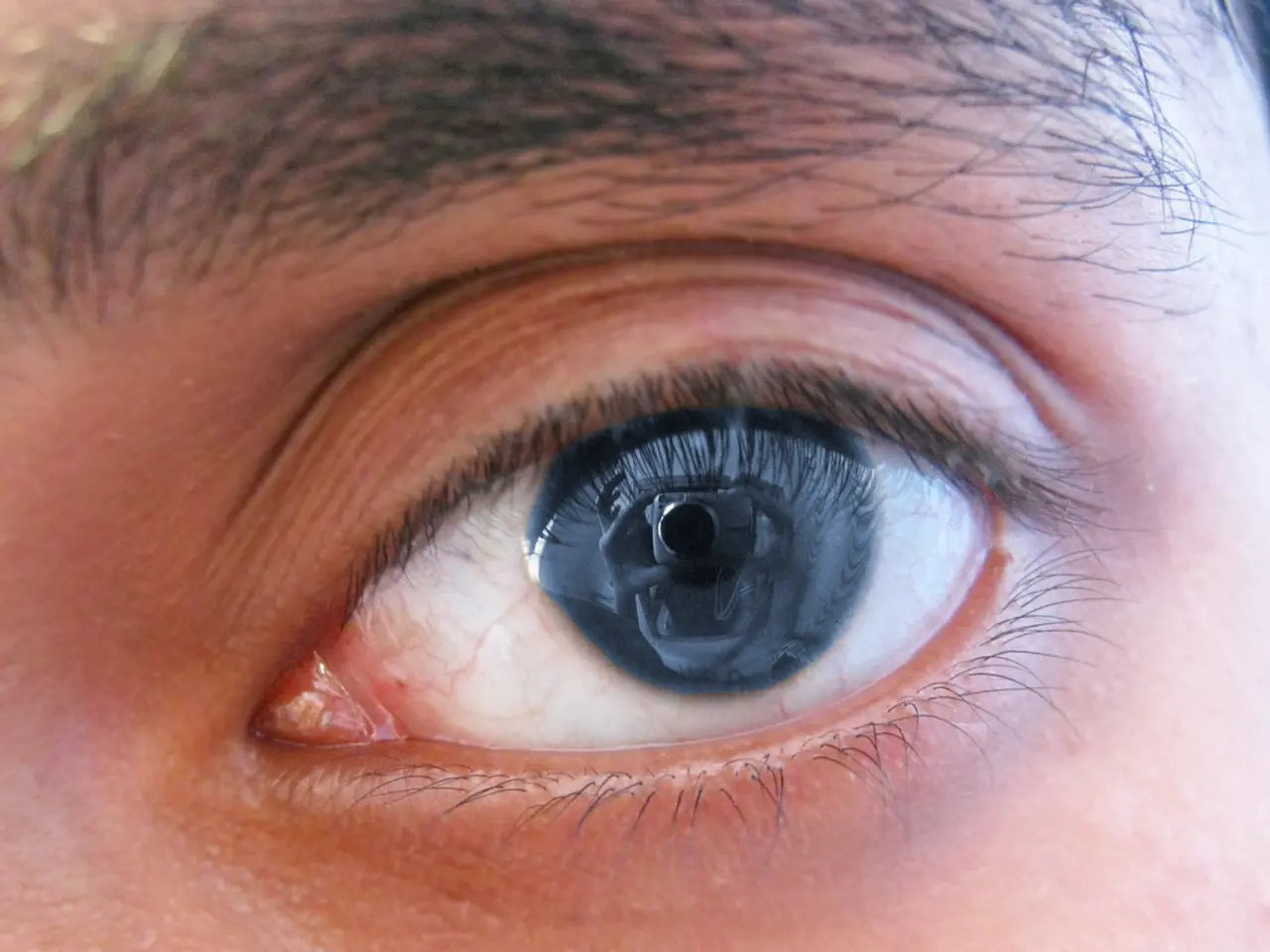Retina Separation: Understanding Its Nature, Causes, and Risks
In the natural course of adulthood, a change called vitreous detachment, or PVD (Posterior Vitreous Detachment), occurs. This change involves the vitreous, the gel-like fluid that fills the middle of the eye, becoming less solid and more liquid-like [1]. As the vitreous becomes more liquid, it pulls back from the retina, causing a separation.
While many people may not notice any symptoms, others may experience floaters, flashes of light in the peripheral vision, or dark shadows moving across the field of vision or decreased vision [1]. In some cases, this process can lead to potential complications such as retinal tears, retinal detachment, vitreous hemorrhage, epiretinal membranes, and macular holes [1][4][5].
Potential Complications
- Retinal tears and retinal detachment: Due to vitreous fibers pulling on the retina, these complications may cause vision loss if left untreated [5][1].
- Vitreous hemorrhage: This can lead to further complications such as proliferative vitreoretinopathy and ghost cell glaucoma [4].
- Epiretinal membranes or cystoid macular changes: These can cause visual distortion and permanent dysfunction, even after resolution [1].
- If vitrectomy surgery is performed, risks include early cataract formation, infection (endophthalmitis), chronic inflammation, macular edema, and traumatic optic neuropathy [1][2].
- Patients with vitreous pigment granules or hemorrhage in the vitreous are at a significantly higher risk (about 52 times more) of retinal tears, requiring close monitoring [1].
Treatments
In uncomplicated cases, observation and routine eye exams are sufficient to monitor for signs of retinal tears or detachment [5]. For symptomatic floaters or persistent visual disturbance, laser vitreolysis or pars plana vitrectomy (PPV) may be considered [2][1].
- Laser vitreolysis: This option is available in select cases, though success rates and risks vary (rare complications include transient eye pressure spikes and rare lens or retinal damage) [2].
- Pars plana vitrectomy (PPV): This procedure can remove floaters and restore vision lost due to vitreous pathology, but carries risks of cataract formation, retinal detachment, infection, and prolonged recovery time [1][2].
If retinal tears are detected, laser barricade treatment or urgent surgery may be necessary to prevent progression to retinal detachment [2][5]. Technologies like B-scan ultrasonography and OCT assist in diagnosis and treatment planning for vitreoretinal disorders associated with vitreous detachment [1].
Patients should be educated to watch for symptoms such as new flashes of light, increased floaters, or visual loss and seek prompt ophthalmologic evaluation to reduce the risk of serious complications. Regular follow-up is essential, especially if pigment or hemorrhage is present in the vitreous [1][5].
Symptoms of retinal detachment, a possible complication of PVD, include the appearance of many new floaters, sudden flashing lights, a gray curtain over the field of vision, a shadow in the peripheral vision, and immediate vision loss [1]. Treatment for a detached retina may involve vitrectomy, pneumatic retinopexy, or scleral buckle surgery [1].
It's important to note that around 85% of people who experience vitreous detachment do not develop complications [1]. Regular follow-up and prompt treatment can help manage and reduce the risk of complications.
References: [1] American Academy of Ophthalmology. (2021). Vitreous Detachment. https://www.aao.org/eye-health/diseases/vitreous-detachment-pvd [2] Mayo Clinic. (2021). Vitreous detachment. https://www.mayoclinic.org/diseases-conditions/vitreous-detachment/symptoms-causes/syc-20353958 [3] National Eye Institute. (2021). Posterior Vitreous Detachment (PVD). https://nei.nih.gov/learn-about-eye-health/eye-conditions-and-diseases/posterior-vitreous-detachment-pvd [4] National Eye Institute. (2021). Vitreous Hemorrhage. https://nei.nih.gov/learn-about-eye-health/eye-conditions-and-diseases/vitreous-hemorrhage [5] American Academy of Ophthalmology. (2021). Retinal Tears and Detachment. https://www.aao.org/eye-health/diseases/retinal-tears-and-detachment
- The natural process of aging can lead to retinal problems like tears and detachment due to peripheral vasculardisease, which might cause vision loss if left untreated.
- Science and technology advancements, such as B-scan ultrasonography and OCT, assist in diagnosing and planning treatments for vitreoretinal disorders associated with blindness.
- To maintain health-and-wellness, employees in the workplace-wellness sector should be educated on the importance of regular eye exams and emergency symptoms of retinal detachment, like sudden flashing lights, vision loss, or a gray curtain over the field of vision.
- Fitness-and-exercise and a balanced nutrition are essential for overall health, but they also play a crucial role in maintaining good eye health, delaying the onset of age-related retinal problems.
- In addition to physical health, mental-health is equally important, and individuals with stress-induced puncticillary rash or other skin-care issues should seek appropriate therapies-and-treatments to address these conditions and improve their quality of life.
- Regular check-ups and timely treatments can help manage complications arising from blindness and retinal problems, ensuring a better understanding and prevention of possible health concerns in later years.




